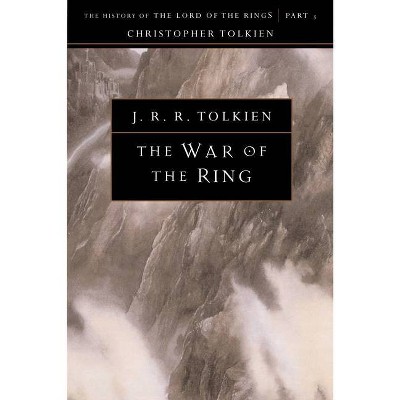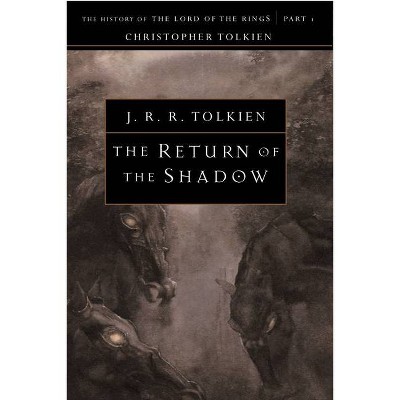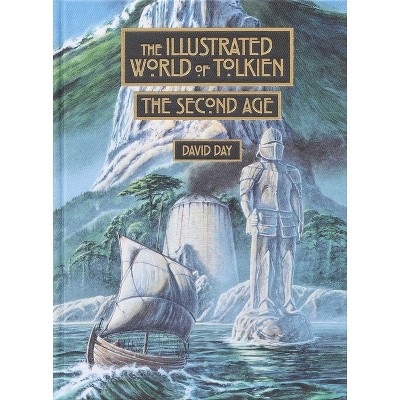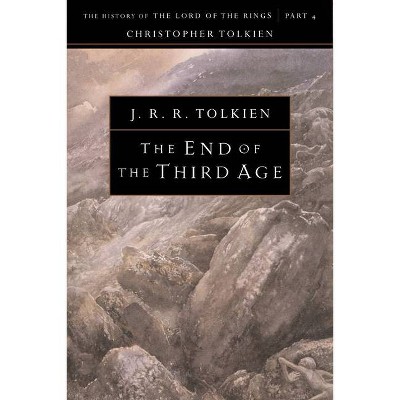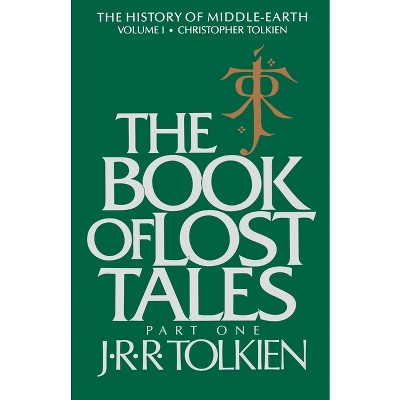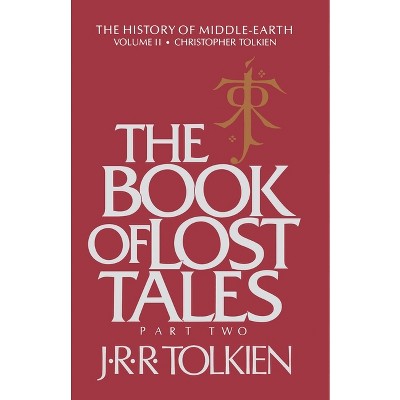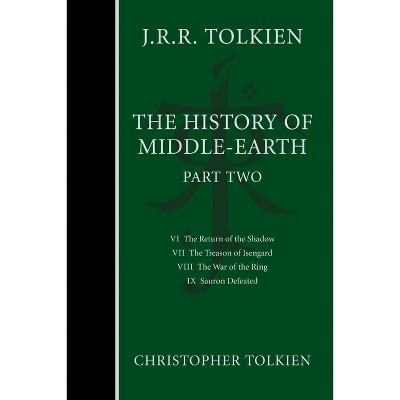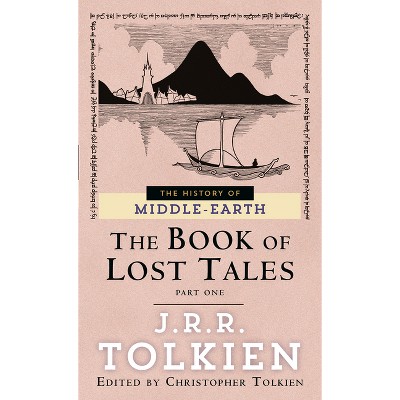Sponsored

The Treason of Isengard - (History of Middle-Earth) by J R R Tolkien (Paperback)
In Stock
Sponsored
About this item
Highlights
- The second part of The History of The Lord of the Rings, an enthralling account of the writing of the Book of the Century which contains many additional scenes and includes the unpublished Epilogue in its entirety.The Treason of Isengard continues the account of the creation of The Lord of the Rings started in the earlier volume, The Return of the Shadow.It races the great expansion of the tale into new lands and peoples south and east of the Misty Mountains: the emerence of Lothlorien, of Ents, of the Riders of Rohan, and of Saruman the White in the fortress of Isengard.In brief outlines and pencilled drafts dashed down on scraps of paper are seen the first entry of Galadriel, the earliest ideas of the history of Gondor, and the original meeting of Aragorn and Eowyn, its significance destined to be wholly transformed.The book also contains a full account of the original map which was to be the basis of the emerging geography of Middle-earth.
- Author(s): J R R Tolkien
- 512 Pages
- Fiction + Literature Genres, Fantasy
- Series Name: History of Middle-Earth
Description
About the Book
The Treason of Isengard is the seventh volume in Christopher Tolkien's History of Middle-earth and the second in his account of the evolution of The Lord of the Rings. This book follows the long halt in the darkness of the Mines of Moria (which ended The Return of the Shadow) and traces the tale into new lands south and east of the Misty Mountains. Tolkien introduces us to Lothlorien, land of the elves, where we meet the Ents, the Riders of Rohan, and Saruman the White in the fortress of Isengard. In brief outlines and penciled drafts dashed down on scraps of paper are the first entry of Galadriel; the earliest ides of the history of Gondor; and the original meeting of Aragorn with Eowyn, its significance destined to be wholly transformed. Conceptions of what lay ahead dissolve as the story takes its own paths, as in the account of the capture of Frodo and his rescue by Sam Gamgee from Minas Morgul, written long before J.R.R. Tolkien actually reached that point in the writing of The Lord of the Rings. A chief feature of the book is a full account of the original Map, with drawings of successive phases, which was long the basis and accompaniment of the emerging geography of Middle-earth. An appendix describes the Runic alphabets of the time, with illustrations of the forms and an analysis of the Runes used in the Book of Mazarbul found beside Balin's tomb in Moria.Book Synopsis
The second part of The History of The Lord of the Rings, an enthralling account of the writing of the Book of the Century which contains many additional scenes and includes the unpublished Epilogue in its entirety.
The Treason of Isengard continues the account of the creation of The Lord of the Rings started in the earlier volume, The Return of the Shadow.
It races the great expansion of the tale into new lands and peoples south and east of the Misty Mountains: the emerence of Lothlorien, of Ents, of the Riders of Rohan, and of Saruman the White in the fortress of Isengard.
In brief outlines and pencilled drafts dashed down on scraps of paper are seen the first entry of Galadriel, the earliest ideas of the history of Gondor, and the original meeting of Aragorn and Eowyn, its significance destined to be wholly transformed.
The book also contains a full account of the original map which was to be the basis of the emerging geography of Middle-earth.
